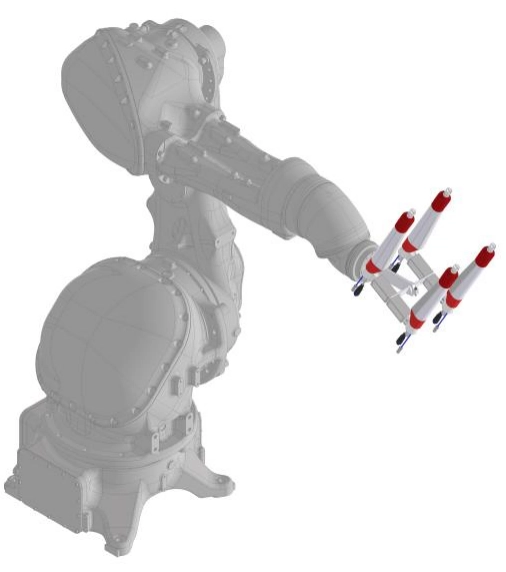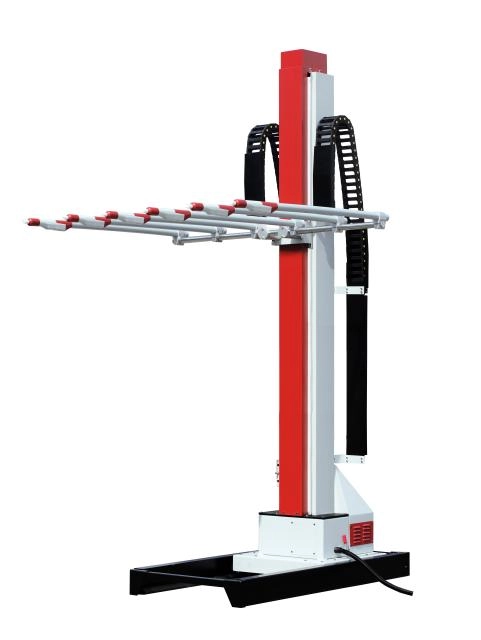Content Menu
● Understanding Electrostatic Spray Guns
>> How Electrostatic Spray Guns Work
>> Benefits of Electrostatic Spraying
● Common Issues in Electrostatic Spray Gun Operation
>> Poor Spray Pattern or Uneven Coverage
>>> Causes:
>> Low Transfer Efficiency and Excess Overspray
>>> Causes:
>> Electrical Problems and Static Charge Failure
>>> Causes:
>> Paint Flow Issues and Sputtering
>>> Causes:
● Troubleshooting Procedures for Better Results
>> Step 1: Inspect and Clean the Gun Components
>> Step 2: Check Fluid and Air Pressure Settings
>> Step 3: Verify Proper Electrical Grounding
>> Step 4: Examine Paint Material Properties
>> Step 5: Test Gun Distance and Movement
>> Step 6: Evaluate Electrical Supply and Components
● Maintenance Tips for Enhanced Performance
>> Daily Maintenance
>> Weekly Maintenance
>> Monthly Maintenance
● Advanced Tips for Troubleshooting Difficult Issues
>> Using Diagnostic Tools
>> Training Operators and Technicians
>> Consulting Manufacturer Support
● Frequently Asked Questions
>> Why is my electrostatic spray gun producing an inconsistent spray pattern?
>> How do I know if the grounding of my workpiece is adequate?
>> What causes paint to spatter or sputter from the gun?
>> How can I improve transfer efficiency in my spraying process?
>> What regular maintenance should I perform to avoid spraying problems?
Electrostatic spray guns are widely used in various industries for efficient and uniform coating applications. However, improper function or common issues can impact the quality of the finish, wasting materials and time. This comprehensive guide will help you understand common problems encountered with electrostatic spray guns and how to troubleshoot them effectively to achieve better results.

Understanding Electrostatic Spray Guns
Electrostatic spray guns use electrically charged particles to attract the spray coating to the grounded surface, resulting in better adhesion, reduced overspray, and uniform coverage. This technology is used for painting, powder coating, and other finishing processes in automotive, manufacturing, and woodworking industries.
How Electrostatic Spray Guns Work
The gun imparts a positive or negative charge to paint particles as they exit the nozzle. These charged particles are then attracted to the oppositely charged grounded target. This attraction helps the particles wrap around edges and improve transfer efficiency.
Benefits of Electrostatic Spraying
- High transfer efficiency, reducing wasted paint
- Improved coating uniformity and finish quality
- Ability to coat complex shapes and hard-to-reach areas
- Reduced environmental impact due to less overspray
Common Issues in Electrostatic Spray Gun Operation
Electrostatic spray guns, like all complex tools, can face frequent issues that influence performance and coatings. Knowing these common problems and their causes will help you quickly identify and correct problems.
Poor Spray Pattern or Uneven Coverage
If the coating does not lay down evenly or shows defects such as streaks, thin areas, or blotches, this often indicates a problem with the spray pattern.
Causes:
- Clogged or damaged nozzle or tip
- Incorrect fluid pressure or air pressure settings
- Incompatible fluid viscosity or temperature
- Worn internal gun parts or seals
Low Transfer Efficiency and Excess Overspray
When more paint escapes into the air than adheres to the target, it wastes material and increases costs.
Causes:
- Insufficient electrical charge on paint particles
- Poor grounding of the workpiece or spray booth
- Too high atomization pressure
- Spray gun too far from the target
Electrical Problems and Static Charge Failure
One of the most critical components in the electrostatic gun is the electrical charge supplied to the paint particles.
Causes:
- Grounding failures (poor connection or missing ground)
- Malfunctioning power supply or voltage regulation
- Faulty wiring or damaged cables
- Build-up of conductive residues or moisture in the gun
Paint Flow Issues and Sputtering
Irregular paint flow, sputtering, or spitting reduces finish quality and causes waste.
Causes:
- Blocked fluid passages or tip
- Air leaks in the fluid system
- Paint viscosity too high or too low for the gun settings
- Worn or damaged fluid needle or seal
Troubleshooting Procedures for Better Results
To maximize spraying performance, use systematic troubleshooting to isolate and resolve issues.
Step 1: Inspect and Clean the Gun Components
Start by thoroughly cleaning the nozzle, tip, and air cap. Use appropriate cleaning agents recommended for your coating material. Remove any dried paint deposits or debris that can distort the spray pattern.
Step 2: Check Fluid and Air Pressure Settings
Verify that fluid pressure and atomizing air pressure are set according to the manufacturer's specifications. Adjust pressures incrementally to observe spray pattern changes and transfer efficiency improvements.
Step 3: Verify Proper Electrical Grounding
Ensure the workpiece and spray equipment are properly grounded. Check cables and connectors for continuity, and replace defective parts immediately. Use a grounding meter if available to confirm a good electrical connection.
Step 4: Examine Paint Material Properties
Check the paint viscosity and temperature. Adjust as needed for optimum flow and atomization. Thin overly thick paint with recommended solvents, and ensure paint is well mixed to prevent settling or separation.
Step 5: Test Gun Distance and Movement
Maintain the correct gun distance from the target, typically between 6 to 12 inches depending on the application and equipment. Use smooth, even strokes while spraying to avoid heavy spots or missed areas.
Step 6: Evaluate Electrical Supply and Components
Test the power supply voltage and ensure cables and connectors are intact. Look for signs of wear or damage in high-voltage components. Replace damaged parts or consult a technician if electrical failures persist.
Maintenance Tips for Enhanced Performance
Proper maintenance prolongs the life of your electrostatic spray gun and reduces malfunction frequency.
Daily Maintenance
- Clean gun components immediately after use
- Inspect and replace worn seals and needles
- Check electrical connections and grounding
Weekly Maintenance
- Conduct a more thorough cleaning of gun internals
- Verify calibration of pressure regulators
- Inspect for corrosion or paint build-up on conductive parts
Monthly Maintenance
- Test insulation resistance of the gun and cables
- Replace any aging or fragile components
- Review and update spray parameters for optimal results
Advanced Tips for Troubleshooting Difficult Issues
Using Diagnostic Tools
- Electrostatic field meters can measure charge strength.
- Pressure gauges and flow meters help verify fluid and air supply conditions.
- Thermal cameras may detect overheating in electrical components.
Training Operators and Technicians
Proper training on equipment use and safety procedures reduces operator errors that cause common problems.
Consulting Manufacturer Support
When issues persist despite troubleshooting, contacting the manufacturer helps ensure you receive expert advice and original replacement parts.

Frequently Asked Questions
Why is my electrostatic spray gun producing an inconsistent spray pattern?
This is often due to a clogged nozzle or incorrect pressure settings. Clean the nozzle thoroughly and check that air and fluid pressures meet the recommended values.
How do I know if the grounding of my workpiece is adequate?
Ensure the workpiece is connected to a verified ground point using proper cables. A ground resistance tester can help verify effective grounding.
What causes paint to spatter or sputter from the gun?
Possible causes are blocked fluid passages, damaged needles, or air leaks. Clean and inspect fluid channels and replace worn parts.
How can I improve transfer efficiency in my spraying process?
Optimize electrical charging, maintain proper gun distance, lower atomization pressure, and ensure good grounding.
What regular maintenance should I perform to avoid spraying problems?
Daily cleaning, weekly inspections, and monthly electrical testing ensure consistent performance and prevent equipment damage.
Hot Tags: China, Global, OEM, private label, manufacturers, factory, suppliers, manufacturing company










































 .
. 